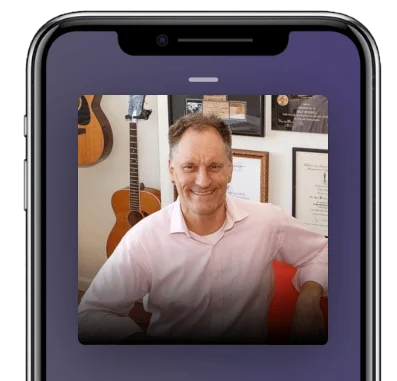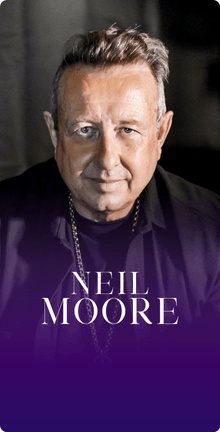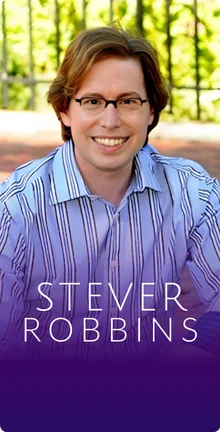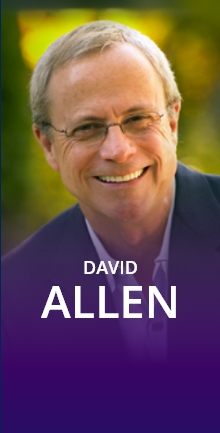In this Episode
- [01:51]Will’s three interests are efficiency/productivity, music, and the brain. He explains why the music we tend to listen to isn’t great for productivity, and discusses how putting headphones on to block out distracting sounds actually makes things worse.
- [07:22]Your non-conscious mind doesn’t only notice music with vocals, but also music with instruments that sound like a human voice, or other things related the human voice (such as breath sounds).
- [09:45]Some people are more easily distracted than others, Will explains, and reveals that for certain distractibility levels, having more distraction is actually better.
- [13:00]Stephan steps in to relate what Will has been saying to what we learned in a previous Get Yourself Optimized episode with Helen Irlen.
- [14:20]Will returns to the idea of early humans, and explains how ADD and ADHD would have benefitted us in those days.
- [17:23]The distractibility scale is an internal concept at Focus at Will, Will explains. He then offers a simple way to conceptualize it and assess your own distractibility. Next, he explains how habituating to your sound environment reduces productivity.
- [21:12]Will talks about using the recommended practice for using the timer on the Focus at Will system, then plays some sound samples from the system.
- [24:19]For listeners not familiar with the concept, Will explains what binaural beats are.
- [27:08]There have been two main differences between men and women on the Focus at Will system: women tend to listen at a lower volume, and what happens in the brain during a flow state.
- [29:37]Stephan talks about the concept of attention residue.
- [31:55]Will explains what a stand-up meeting is, and how they function at his company.
- [34:43]We hear about how the Pomodoro Technique connects to what Will has been talking about.
- [37:16]Will offers a simple trick for getting into a flow state.
- [40:43]Stephan talks about classical music, explaining that he finds it so boring that it would put him to sleep if he listened for long. Will explains that he doesn’t like it either, but that it’s one of the most popular stations on the program.
- [43:13]The type of music on Focus at Will is called “streamlined music,” Will explains.
- [44:41]Focus at Will is based on hard science. Will talks about a study they did last year involving the Big Five personality traits, and explains how this relates to the Focus at Will program.
- [48:07]How long of a trial period is enough to figure out whether Focus at Will will work for you? For most people, 48 hours is long enough. It works for about two out of three people, and if it doesn’t work for you, you’ll know it.
- [48:57]Will offers some final words of advice for listeners.
Transcript
Welcome, Will. It’s great to have you on the show.
Hey, thanks very much for having me.
Let’s talk about productivity and music, since you’ve found a way to bring those two loves into one business now with Focus@Will. What’s the deal about having not just any music but the right kind of music in the background so that you can get into a flow state?
My interest is in three things. The two things you’ve talked about, which are productivity or efficiency and music. The third leg of the stool is your brain. It’s efficiency, productivity, music, and your brain. There is a delta between these three things, which is exactly at Focus@Will, which is the music tech service that I’m the founder and CEO of. To sum it up in just a quick second, there are certain types of music that are going to divide your attention if you play them in the background, while you’re trying to work. There are certain kinds of music that help you when you’re trying to work. If you go into an open office – by the way, about two-thirds of the workforce at the moment in North America works in an open office, where everybody is at a big table or low cubicles. You’ll see a lot of people with headphones on.
Us humans instinctively know that if we wanna buck out the guy talking in the next cube or just some stuff happening over there, you put some headphones on and try and tune it out, but the problem is that music – I’m talking about commercially available music. That’s like anything on Pandora or the music business, Beyoncé or YouTube – whatever you like. It’s designed to engage you. It’s designed for you to like it, and that’s why they exist. If you didn’t like it, it wouldn’t be made. It wouldn’t exist. It wouldn’t be a hit. If you listen to music you like, the rest of your life, while you’re trying to work, it’s actually going to divide your attention. That’s what got me going when I started this company. I’ve got a previous career as a reasonably successful songwriter and musician, and I was the founder of a band called London Beat, back in the nineties.

Yes. I’ve Been Thinking About You.
I’ve been thinking about you, too. Funny, you should mention it. It’s the number one record in 1992. I was very involved in making music that engages, that people want to hear. You can got to Home Depot today, and the chances are very high, if you’re in there long enough, you’ll hear a London Beat on one of the oldies records that they play in there. But if you play music like that while you’re working, what’s happening is that the part of your brain that’s not working – think of it this way. Let’s talk about the brain quickly. Does your flow state, does your concentration, is the thing you’re doing right now, which is me talking to you in fact – and I’m looking at a photograph of you in the Skype program that we’re talking on at the moment. I’m kind of waving my hands around, and I’m concentrating on the conversation we’re having. This is called my endogenous attention, by the way, which is me talking to you now. The exogenous attention, which is the part of my brain that is looking out for my safety. This is an automatic part of the brain that you don’t have any conscious awareness of. You call it your non-conscious brain. Your non-conscious mind is listening to things around you so that you are safe while you’re working.
Your non-conscious mind is listening to things around you so that you are safe while you’re working.
As I’m talking to you now, there’s a door behind my head. I can’t see the door behind me, but I could hear if somebody came in. My ears are on constant alert for someone coming in behind me in case it’s someone coming to hurt me or someone bringing me a sandwich or fight-or-flight. What’s happening is that when you’re working and you’re concentrating on something, if you put headphones on and you try and block out the sounds, you’re actually often making it worse. You’re actually distracting yourself more. The reason why is that everybody’s brain is hardwired to notice some sounds, and one of the sounds which we are hardwired to notice is a human voice. That’s a human voice of any kind, whether it’s in another language. If you think about it, if say you and I are sitting in a cave right now having a cave beer, chatting about the hunt today or whatever we would have been doing – if we hear out of our eyesight or out of our direct line of sight, if we hear a human voice, we evolutionarily are hardwired to make three decisions. It’s called food, sex, and danger. Is this someone bringing me some food? Is this someone coming to steal something or hurt me? Or is this the other thing? Not necessarily in that order of course.
But the part of your brain that reacts like that is still very much present in our daily life today. If you put music on that has a vocal in it, your nonconscious brain will spend more time noticing it. It will pay more attention to it. Of course, nearly all the music we like has vocals in it – singing. In Focus@Will, we got a lab, and we’ve done a lot of experimenting with different types of audio and music, playing in the background while people are working on tasks. We found that your unconscious mind doesn’t only notice the obvious like music with vocals in, but it is also highly tuned to instruments that sound like a human voice, such as saxophones or lead electric guitars or cellos. In fact, the reason why saxophones are so popular with the public is that they actually sound like a human voice. Miles Davis – trumpet – he sings with his trumpet. That’s why Miles is the icon that his music is.
In Focus@Will, we figured out what types of music do work in the background, and as you can probably guess, nothing that has a voice in, nothing that has a human voice-sounding like an instrument, so no cellos, saxophones, very few trumpets. Then there are other things that are very subtle but are related to the human voice, such as breath sounds. A lot of electronica has sounds in it that are somewhat based on human voices. These kinds of “hahahahaha” or “ssssss.” These are all very human voice-like sounds. The pitch of a lot of sounds, especially in trance electronica is in a range – there’s a lot of energy in the range of the sound. The frequency between 1 and 4 kHz, which is exactly the frequency of intelligibility in the human voice. To cut to the chase, we figured out there are certain types of music, which if they are mixed properly and they are curated and they are edited and mastered properly, actually do help you concentrate when you’re working. That’s what we do.
There’s a lot of stuff that will distract and take your attention away from the task at hand. If you were to play this kind of music that has vocals, breath sounds, etcetera, saxophone, or if you play the TV in the background, or if you play a movie in an additional window – your Netflix or something, and you’re just kind of not watching it. You’re coding or whatever, and you think, “Oh, that’s relaxing me.” Enjoying that, but you actually destroyed your productivity with this.
About 15% of the population are measurably more easily distracted than the rest of the population.
Well, I could address that. The other big takeaway that we have found over 5 years and nearly $5 million worth of investments and research on this, is that everybody is different. You could think of how distracted someone is or how easily distracted someone is. You could put a number on it. It’s a distractibility scale. Some people just get distracted all the time, and of course, the extreme level of this is like a 9 or a 10 – is someone who’s got ADD, someone who actually has attention deficit, which despite some people denying is a real thing, it is a real thing. About 15% of the population are measurably more easily distracted than the rest of the population. An extreme version of that – maybe say 3 or 4% of the population have significant distractibility problems. These are people who cannot sit still, who cannot concentrate on something unless – here’s the thing. It works like this. The more easily distracted you are, the more stimulus, the more stuff you need to have in your environment to be able to concentrate on the thing you’re doing. Think about your most tweaky coder friends, people that you work with who are really hyper all the time. They will often have very messy desks. They will often be listening to a game on one channel and death metal on another channel.
There’s stuff all around them all the time. What’s happening is, their brain is wired in such a way that when they have a lot of external stimulus, it allows them to be calm and still. I’m sure you know that kids in particular with ADD are actually prescribed stimulants, amphetamines basically. What’s happening to an ADD brain is when it is overclocked, it allows the person to be calm and still. If anybody’s ever seen an ADD kid, a real one who has incredible difficulty sitting still or concentrating on something – if they are given medication, it literally calms them down. They can sit and read for like a couple of hours. It’s a magical thing. Of course, the side effect of that is we have developed a generation of kids, who are hooked on amphetamines basically. In Focus@Will, we found there is a direct line between the energy and the speed and intensity of music and how easily distracted someone is. If someone is extremely distracted or ADD, for instance, we have specific music channels that help overclock the brain to calm you down. One of our popular channels is called ADD Type 1 on the Focus@Will system. About 4% of our users listen to it all the time, and it sounds like someone slamming a car door constantly. It’s very, very noisy.
Interesting. This reminds me of another episode of Get Yourself Optimized, where I interviewed Dr. Helen Irlen. She’s the discoverer of Irlen Syndrome, and a third to a half of all people have this thing, where the brain is overactive because of the stimulus visually that makes it harder for you to read, to stay focused without falling asleep reading for a period of time, or perhaps when you’re driving, you might get night blindness and so forth. I think I have Irlen Syndrome. I’m gonna go in and get checked for that, but there’s some similarity there from what she was describing. Kids who have been diagnosed as ADD or ADHD – if they wear the Irlen filters (the glasses with the colored filters), it can actually reduce the overclocking in the brain, calm the brain down, and that’s shown in the specs studies, the specs scans. Then they can read for long stretches of time without having to take breaks and without having to find something else to do or whatever. They can just enjoy it instead of it being hard, hard work. It’s pretty interesting.
If you think about – again, humans are tribal, social animals. Think back many hundreds of thousands of years. It was always a really good thing to have some people in the tribe who were able to be calm in a crisis. That’s what this means. It’s a lot wilder. While the stuff is hitting the fan, it’s always good to have someone who’s really calm. “Okay.” It’s not a learning disadvantage, having a kid with ADD; it’s just a learning difference. Understand that a lot of people in high tech, a lot of people who are quite brilliant are ADHD. When you look at classic cases, what about Steve Jobs? These people are wired differently. Apple – they had to think differently. Well, to be able to be a genius or brilliant at a very high level, you have to be easily distracted, which means that you need a lot of stuff going on to be able to be productive.
To be able to be a genius or brilliant at a very high level, you have to be easily distracted, which means that you need a lot of stuff going on to be able to be productive.
Also, I learned about, speaking evolutionarily again, back in the tribal days, there was a group of people inside the tribe called spotters. They would keep an eye on things, make sure that the tribe wasn’t getting attacked, being stalked by a dangerous animal or something. They were wired like the ADD folks today, so it wasn’t a disease. It was an evolutionary advantage to be able to be on high alert and pick up on the stuff and save the tribe from getting eaten.
It was something that we selectively bred for, you could say. Think about some jobs as well – just while we are in the topic – some professions, where being calm in a crisis is an incredibly useful thing. Battlefield surgeon, emergency room technician. I have a friend. She works 36 hours a week. She’s an emergency room nurse, and she does it in three days – three twelve-hour days. It’s crazy. It’s at an inner-city hospital, and there’s everything coming through the door constantly – gunshots and pregnant people. Just insane stuff. She finds it relaxing work because she’s able to be so calm, while all of these stuff is going on. Air traffic controllers. I would imagine anybody working around the president, whoever he or she is, cops, fighter pilots – these are jobs where you have to be absolutely calm, while there’s an incredible amount of stimulus coming in.
Let’s talk a little bit more about the distractibility scale. What’s the scale run from and to? Can you take a test on the web to find out what your distractibility score is? How does that all work?
It’s a notion that we are using internally in Focus@Will. Actually, in the next month, we’ve got a new live test, which tells you exactly where you sit on the distractibility scale. At the moment, think of it in a very simple way. Conceptualize that low distractibility means that you can sit and work on something without being distracted for awhile, and high means that there’s a time limit. Let’s talk about – there’s a third critical part of understanding why you get distracted. Just imagine for a minute. We’re sitting in, say, a coffee shop. A lot of people like the sound of a coffee shop. In fact, in the Focus@Will system, we’ve got some very specific specially recorded tracks of a coffee shop. A lot of people find it relaxing. It somehow seems to anonymize the space. You would typically be able to sit there for a period. If you’re sitting down to work, and you’re in an ideal situation. There are no distractions, and you’re sitting there. You’re getting on with it. But after a certain amount of time, usually 20-25 minutes, you just are out of the flow. You’re just like, “I gotta remember to pick my kid up tonight. I forgot to put the trash out.” This kind of internal thoughts are kicking in. What’s happening technically is that your brain is becoming habituated to your environment.
Let’s say, we’re back in the cave again for a second. We’re sitting there, and there are no obvious sounds outside. There’s no sticks breaking. There are no footprints. Everything sounds fine. We’re sitting there having a beer, however at a certain point – a cave beer – one of us would have to get up and go, “Hey, I just wanna check that there are no bears.” It feels like you’ve got this timer. We’re like, “We’ve been in here. I’m just gonna check.” A lot of women are more sensitive to this – we found in our research – than men are, which is, “Did you lock the door? Did I turn the oven off?” It’s these kind of thoughts. What’s happening is you are habituating to your sound environment particularly. We found this remarkable trick in Focus@Will, and this is part of the patented process of how this works, which is we have figured out what to do to change subtle things.
Very certain – there are about nine or ten things that change in the audio stream of every channel at about 20 minutes. What it does is it enables you to persist on a task longer than you’d normally be able to work. We found in tests that most people – there you are sitting in a Starbucks, or you’re sitting at your work. You can usually go for 20-25 minutes before you start to habituate – before you start coming out of a flow state. With the Focus@Will audio stream, many people can go three times to four times longer. The average time of someone running sessions on the Focus@Will system is an hour and 10 minutes – 70 minutes. Some people can do up to an hour and 20 to an hour and 30. This is solid continuous work, where you are just wound into the thing you’re doing. You’re on task. You’re very persistent, and then you’re like, “Whoa! What just happened? An hour-and-a-half went by. Wow.”
When somebody is using the system, the Focus@Will system, are they only playing the music when they are working, or will they play it and then walk away from the computer and do other stuff?
We recommend that people use this as an absolute focusing tool.
It depends on what you’re doing. There’s a timer on the system, and the best way of working – the recommended practice is to set the timer to whatever – if you’ve got an hour and 15, set the timer to an hour and 15 – 75 minutes. There will be a bell ringing, and then it will then guide you through the next 75 minutes. The bell will ring when you’re finished. We recommend that people use this as an absolute focusing tool. In other words, you sit and you use it, and then you stop and don’t use it when you’re not trying to focus.
That makes sense because you don’t wanna train your brain to take that cue and do something different, which is an important idea that a habit has three components to it. It has the cue and the habit itself, and then the reward. If you understand the three components and you can take the cue and make sure that that triggers the right behavior, the right habit.
We’ve got over a million users now. There’s some strong – exactly what you’re saying. The Pavlovian response of the bell rings – in our case, it isn’t that the dogs know that dinner’s coming. The bell rings, and then you know that you’re gonna stop working. In fact, let me just turn the mic to here for a second, and you will hear the bell. The bell will ring. This is the ADHD channel. It’s a little.
Wow. That’s noisy.
Let me just change the channel to something that’s a little… This is one of the popular downtempo channels. The thing about the Focus@Will music is that it doesn’t sound like some weird scientific annoying – a lot of binaural sounds that you hear on the net are just annoying after a while. But everything in the Focus@Will library has been individually – you can’t hear any of these mixes anywhere else. It’s entirely exclusive to us. As I was saying, you hear the bell. You set yourself up to ring the bell, and it triggers you – train yourself over the period of just a few days to hear the bell. The music kicks in, and the idea is not to notice the music. The idea is just to have it fade into the background and just be in this amazing flow state.
Let’s just briefly differentiate binaural beats. Define that for our listeners. They’re probably not familiar with that terminology. Could you come into a little bit of detail on that?
I can. Yeah. The human brain responds to frequencies in the same way that – you may recall there’s a military story of how when soldiers march across a footbridge, they have to break step. Do you remember that story?
Because otherwise, it will start resonating the bridge.
And the bridge will break.
Yeah.
Yeah. Over the years, they just knew – everybody to break step and walk across the bridge because if they march across the bridge, it creates a resonance that can break the actual structure of the bridge, with enough people on it. The brain works in a very similar way. There are specific frequencies within the brain that are shown to be dominant when you are in a focused state, in particular, in the same way that there are other frequencies when you’re sleeping or when you’re in a high-alert mode. There are certain frequencies that resonate in the brain when you are in a flow state. They are between 8 and 14 Hz. Binaural beats work by playing sounds that have these resonance frequencies in them – between 8 and 14 Hz. That means pulses per second. It has been shown, for some people some of the time, that that can help promote a state of focus and flow. The thing is that it doesn’t work well for everybody. For some people, it’s incredibly annoying. Some people get a headache. Some people just hate – it just doesn’t work well. It often manifests in the audio as this kind of bleepy sound. It goes [makes sounds], which you can kind of hear. We figured out ways to do entrainment in Focus@Will musically, so the entrainment frequencies are built into the mix of the audio. It doesn’t sound like some scientific, nasty, annoying bleepy thing.
Very cool.
It doesn’t work for everyone. There are people who just do not like binaural beats at all. It just won’t work for you.
Women are more sensitive and therefore listen to the system lower than men do. Share on XGot it. Let’s go back to the distractibility of folks. I wanted to explore the difference between male and female and how females tend to have more diffused awareness. This is a generalization. This is actually from Alison Armstrong’s work. Great episode by the way. I’ve interviewed her on Get Yourself Optimized, so listeners, definitely listen to the Alison Armstrong episode. It’s amazing. Women have diffused awareness. Men are more single-focused. Given that wiring difference – the brain wiring difference – does that change how you are gonna be affected by distractibility and so forth? It seems like it would be a pretty strong correlation there, that if you’re female, you’re probably gonna get more distracted by stuff in the environment and the background and stuff.
Well, I’m a fan of Alison Armstrong. I’ve read her stuff for many years. We have found very little difference between men and women on our system apart from two things. The data shows us that women listen to the volume at a less level. Women listen quieter than men. Talking as a man myself, having a girlfriend that’s always like, “Can you turn the TV down? The radio’s too loud in the car.” We’re all like, “Yeah. I get that.” The theory behind that is that women’s hearing is more intense – is better. They are more sensitive to high frequencies than men are because of evolutionary – because of the children. Women, evolutionary, have been – childcare. Of course, that’s where all the noise is. Anybody with a family knows. There’s a lot of high-pitched screaming. We found that women are more sensitive and therefore listen to the system lower than men do. Then we’ve got some internal new data, which is very exciting, which we’ll be integrating into our new app over the next year. That is, we found that when you measure a flow state using EEG, EKG biometric devices – basically brainwave measuring equipment – that you can look at – what happens in a female brain is slightly different than what happens in a male brain. There is a difference measurably so, when you’re in a flow state, but the end result is very similar weirdly.
Okay.
I mentioned of the data that we looked at that we were like, “Oh, that’s interesting.” We do a lot of clinical trials and studies in folks, where we did – the last one we did, we had 2500 people in it. If you look at the data and you try and look for commonalities, or you look for things that stick out as a data scientist – when we controlled for gender, we were surprised to see there was a difference, which basically I think confirms what Alison has been saying for a long time.
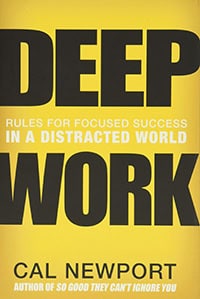
Yeah. Are you familiar with Cal Newport, his book Deep Work and the concept of attention residue?
Yes. Big fan.
He’s great. I’ve interviewed him on the show as well.
Awesome.
Another great episode. But the concept of attention residue is that when you have something that takes your attention away from the task at hand, even for a few seconds, like you’re checking your phone to see what that text message was, the vibration that just came in. Now you’ve got some of your attention over there with the device, even though you stuck it back in your pocket. It can last for 20-25 minutes. It’s quite a significant loss in productivity for quite a period of time.
We’ve measured that in a slightly different way, but with the exact same result. That is, we find that to get into a flow state takes most people 8-12 minutes. When you’re wound into a task that you’re really concentrating on – let’s say, you’re checking a spreadsheet or you’re writing an article or you’re completing a little bit of code or editing a photograph or something – once you’re wound in, if someone comes over and says, “I’ve got a quick question. It will only take a couple of minutes,” well, you’ve now got to come out of the flow state you’re in. You’ve got to put your attention on the thing, which could be the phone ringing, which you’re talking about just now, answer the stupid question, and then dive back into the flow state again, which is now gonna take you longer than it did the first time. First time to get into it – 8-12 minutes. Second time – sometimes you can’t probably get back in for another 25-30 minutes. The advice to anybody listening to this – if you have highly talented, highly paid creatives in particular, and you need to ask them a question, don’t.
No more of these, “Got-a-minute meetings.”
No, no, no, no.
Productivity killers.
Many dev teams have no meetings after [12:00] afternoon. After [12:00] midday, no one is allowed to call anybody. Here in my company, we have a stand-up every morning at 10:00 am with the dev team. We talk about stuff, and only if there’s a huge, full-scale emergency will I go in and bug my development team in the afternoon.
For those listeners who aren’t familiar with the stand-up meetings, why do you do that? How long are they? I’m familiar with the concept.
The idea is that every morning, the core members of the team meet around a stand-up desk, standing up so that you don’t lounge around. It’s a 10-minute meeting. During the 10-minute meeting, everybody goes around the table. Needs to be less than 8 people on the team to be efficient. You say what you were doing yesterday, what you’re doing today, and whether you have any blockers or not. From that meeting, if you have a blocker, then you talk to someone else on the team and have a follow-up meeting in person, right there and then, and say, “Okay, we’re gonna sit for half-an-hour and look at these issues, or an hour.” Then you go back into the cave. Developers have their own methods of working to work on the bigger picture in the afternoons.
That’s called a scrum, right?
Yeah. It’s a scrum in actual development or a daily stand-up meeting. We’re a virtual team actually – everybody in my company, so we do these virtually every day at 10:00 am. You are expected to be there no matter what, unless you’re on vacation, even if you go, “Working on the thing I did yesterday, and I got no blockers.”
You found that instituting this – it increases productivity – the stand-up meetings? Or have you always had that in the company?
No, I’ve always done this. This is my fifth start-up, so I’ve been around software development a long time. One of my previous start-ups was called Rocket Network, which is a company that developed networking for recording studios, so you could work in remote environments. You could have an orchestra in Paris and then a conductor in New York and a guitar player in Los Angeles. That company got bought by Avid, and then I had to work for Avid for 18 months integrating our technology into the Avid. They’re the guys that make Pro Tools and the Avid Media Video Editing Tech, which is used by most TV shows and movies in production. Just watching how they run their team and then sort of reintegrating that back into a start-up world, which is slightly different – we’re based in Los Angeles, but my dev team are in the Bay Area. I used to live in San Francisco, and I have a really good network of super techie friends. Most startups are running on an agile, lean start-up machine and doing a daily scrum or a daily stand-up.
From a productivity perspective, how does the Pomodoro technique fit into this whole conversation, because that technique is based on having – it depends on what the sweet spot is for you – 25-minute Pomodoros or longer. These blocks of time – it sounds like we’re kind of wired to check for bears every so often anyways.
We have found that using the Focus@Will system and setting the timer to multiples of 20 minutes works best.
Twenty to twenty-one (20-21) minutes. Wishing to blow my trumpet loudly here, we have figured out a way to extend the Pomodoro from 20-25 minutes up to an hour-and-a-half. Some people are gonna do an hour and 40 minutes in a single – the Pomodoro is all about: you work until that weird feeling comes in and that urge to, “Ugh. What was that? I gotta put the trash out when I get home. I must not forget.” Those thoughts. We have found that using the Focus@Will system and setting the timer to multiples of 20 minutes works best. One hundred (100) minutes is the sweet spot for most people. It extends your Pomodoro.
Okay. You take this Pomodoro. You focus, and then you have to stop and take a break. That’s part of the Pomodoro technique. It’s a five-minute break? How long is it normally?
The neuroscience behind why makes this incredibly easy to understand. When you work out, your muscles get stiff and cramped. What happens is you can drink an electrolyte drink, Gatorade, and then you feel your muscles kind of coming back into play again. Your brain, when you’re focusing, uses neurotransmitters up. It’s like a nutrient for your brain. It’s just like the Gatorade is for your muscles. You can only work for a certain amount of time before you get that fuzzy, foggy, I-gotta-stop feeling. The best way of recuperating is to stop just for 5 or 10 minutes, and your brain rapidly, when you’re not focusing, replenishes itself with the neurotransmitters. There are about 40, I believe, in the brain that are varying chemicals, which is how your brain is working. Your brain is this incredible chemical factory, chemical machine. Then you’re able to jump back in again. Now you probably heard of the nootropics, smart drugs, and so on? What they are doing is they are – the theory behind nootropics and smart drugs is that they are able to additionally replenish and sustain these neurotransmitters in the brain that you use up while you’re working.
We had a whole episode with Shaahin Cheyenne talking about nootropics and brain hacking. A great episode. Cool! What about the other sorts of flow triggers that get you into a flow state? What are some of the ones that you personally incorporate into your life and work, and what are some that you recommend for our listeners?
I’ve got one ridiculously simple trick, and I’ve not spoken to too many scientists, who agree on why this works. Here’s the trick. You’re sitting down at your computer, and for some reason, you just can’t get in the groove. It happens to all of us. It’s Wednesday morning, and it’s [9:30]. You’ve gotta get a report delivered in an hour, and you’re sitting there spinning your wheels. What do you do? Well, the test is you put your fingers in both hands – I’m kind of doing this as I’m talking to you – in the palms of your hands, so that you’ve got all four fingers in the palms of your hands. At the same time, you scrunch up your toes in your shoes, and you just scrunch your hands together like you’re kind of making a fist but you’re really pushing your fingers into the palms of your hands. You’re scrunching up your toes. As you do that, take a big, deep breath in and out.
Okay. I’m doing it.
Somehow it does a somatic trick. It somehow gets you able to get off the light that would stop your brain spinning for most people. It’s this really crazy trick. You scrunch your toes up, and you kind of scrunch your hands up. Then you get on and breathe in and out, and you’re able to get started. That’s just a trick to get you off the block because usually once you start working, you’re able to keep going. It’s that first step.
That’s a flow trigger to get you into flow?
Yeah.
What if you’ve been knocked out of flow state?
That’s a good one to try and get you back in again.
Okay.
Because it takes you time to wind into a flow state, and the second time you’re trying to get back into the flow state is actually gonna take you longer. It’s an interesting situation that you’re on a task, and you need to get this done, yet you’ve been distracted once. Now you’re trying to wind in again. Quite often, the person that distracted you needs to come back with another stupid question. “Oh, another thing, just before you get back into it. Another thing.” Now, I’m out of my state once. I’m trying to get into it again; now this person has distracted me again. This happens. This is the third time I’m trying to get back into my flow state. What can you do? Well, try the hand trick. If you’re using Focus@Will, try changing the energy level of the channel. We have a control, which is unique to us, which controls something called the kinetic energy of the audio stream. What it’s doing is it’s changing the amount of audio energy at very specific frequencies in the stream. If you’re in a car and you can see the bass speakers moving, you can imagine that’s the kinetic energy of the bass response. The same thing happens with higher frequencies. You just don’t see the speakers moving in the same way. By changing the energy level on the Focus@Will audio channel, the three levels for each different genre on the system, you can either change it up or down. Just change it. That tends to help you just wind back into a flow state.
Very cool. I like it.
Practical advice.
Very good. One of the styles of music that is on Focus@Will is classical.
Yes.
The two most popular channels on our system from numbers are the classical channel and the up-tempo electronica channel, closely followed by the alpha chill.
Are you a big fan of classical music? I personally find it really boring, and I just can’t listen to it for very long. It will put me to sleep.
The thing about Focus@Will is it’s a tool. It’s a tool to get stuff done. It’s not an entertainment-based music system. Your question is do I like classical music, and the answer is not particularly. No.
Do you listen to it though, as a way to focus?
No. Hell no. The two most popular channels on our system from numbers are the classical channel and the up-tempo electronica channel, closely followed by the alpha chill, which is sort of a down-tempo channel. The classical channel has a lot of well-known pieces in it, but they are not the same. Every single piece has been edited, remixed, remastered, and had certain – there are elements that will distract you within classical music. Classical music goes very quiet and then gets very loud. We carefully managed the dynamic range of all of the tracks. Then we literally cut out large sections. Anybody that knows the Mozart Piano Sonatas – is a real classical buff will listen to our classical channel and hear a Mozart Piano Sonata and will be horrified at what we’ve done. We have mangled it, but it’s designed to be playing in the background while you’re working.
Yeah. That makes sense.
It’s different.
If you’re paying attention to it because you’re enjoying it, then it defeats the whole purpose of this.
Yes.
Yeah.
Yeah, this is music that you should not be listening to. This is a tool, that if it’s working perfectly, you won’t even notice. I know. It’s the craziest thing that I – the first 20 years of my career, I was making pop music that the idea is that we want everybody in the world to be singing, “I’ve been thinking about you” and all of those songs. Now in this next part of my life, I’m making music that you don’t wanna be listening to.
Yeah, that’s funny. The irony is not lost.
Thank you.
This type of music that is just kind of going on behind the scenes, you’re not even really conscious of it – it’s just helping you stay inflow. You call it “streamlined music.”
Yes. It’s a good way of describing it, as I was just saying what we do to the classical music in our classical channel – we streamline it. We take out the messy bits, which are the bits with heart engagement, the bits that make you feel happy or sad or scared. We pull those bits out. We have to leave a little bit of them in, so it’s not entirely flat.
Did you come up with that terminology of “streamline music” or “messy music”?
It is original to the company. It was originally created by our science director Dr. Julia Mossbridge, and she said once in a meeting, “You know. This is so streamlined – this music. It’s not messy.” We’re like, “Wait a minute. You have just told us what this is.” We do use it. It explains well. Streamline music is what we do.
I like it. I learned about that first from watching your Singularity University presentation.
Thank you.
That was a great presentation. You guys showed some interesting research and also had the attendees do some interesting exercises to the messy music, to the streamlined music. I remember the OCEAN thing that you had them do. Can you kind of walk us through the key points of that, because it’s good stuff. It’s interesting.
Focus@Will is based on hard, empirical-based science.
Focus@Will is based on hard, empirical-based science. Even though some of the experiments we do are intuitively created, the results are what actually drive the impact of the technology. We did a research project last year, where we measured something called a Big Five personality type. This is a standard psychological test. It’s like the Myers Briggs test. It’s called the Big Five. It’s something called the OCEAN test. OCEAN stands for Openness, Conscientiousness, Extrovertism, Agreeableness, and Neuroticism. There’s a series of tests, and you can put most people on the scale in that Big Five. You can determine someone’s personality by how agreeable they are, how open they are, how neurotic they are, and so on. We found there’s a direct link between certain results to do with introvertism and low openness and specific types of creativity. The short answer to your question is that during this event, which was we’re on the stage at the Singularity University Summit in San Francisco in the last year, we had everybody in the audience take a test to help them figure out what their scores were on the Big Five, on the OCEAN scale. Then we played examples of music, and we’re able to show many people in the audience that if they were more introverted, lower in the openness scale in particular, they were able to be more creative when they were listening to streamlined music.
The bottomline here is if you have low Openness score in the Big Five, then you really need to be using Focus@Will.
Yes. We’re all entrepreneurs, and we’re talking about your most expensive commodity in a company. It’s always the staff. Your rock-star creatives in the company that could be your lead developing – everybody’s got one or two people on the team who are just amazingly creative and are the people that drive the look, the feel, the brand, the story, the technology. These folks are typically more introverted. They are typically low on the scale in Openness. They are typically more shy. They are also the people, who are most impacted by the Focus@Will streamline music in the area of creativity. There is a huge advantage to getting the key, very expensive resources on your team, your lead developer, your lead creative, your writers, and getting them on a regime of listening to streamline music because it will probably increase their creativity and productivity.

I’m one of those types of people.
There you go.
I bet many of our listeners are, too. Introverted and kind of shy. Definitely, it’s worth giving it a go. For what period of time would be an adequate enough test? You can’t just try it for 20 minutes and say, “That didn’t work that well.” You gotta give it a proper trial period.
We have a 14-day free trial on the site, if someone goes. You go to FocusatWill.com. most people figure it within 48 hours. It will either work for you, or it will not. Two people out of three – it works technically. Focus@Will – the streamline music works for two people out of three. By the way, if it doesn’t work, it’s pretty like, “Dude, this is terrible.” It’s really black-and-white. You know when you take a vitamin and you’re not sure whether it’s gonna work for you or not, you’re like, “Ah, I don’t know.” But this is pretty black-and-white.
Got it. Very good. Listeners, do check out the Singularity University presentation that Will gave. It’s a great talk. Any last words of advice for our listeners about productivity?
Absolutely. Remember, if you have really talented, shy, introverted people – the people on your team who are the super creatives – don’t set up meetings in the afternoon. That’s the advice. It seems obvious. No, don’t do it. Just because we, as CEOs and managers, are used to being interrupt-driven and we’ve all got ten things happening all at the same time – that’s not the way that you’ll get the best out of your super creative team.
It makes so much sense. The next thing of course is to actually implement that. “Oh, yeah. Yeah. That’s good. That’s good advice,” and then if you don’t implement it, you don’t get any benefit out of it.
Right.
Very good, Will. I appreciate you sharing all your interesting data and research – $5 million dollars’ worth spent on research – and all your thoughts and ideas and suggestions for folks to increase their productivity and their staff’s productivity is invaluable. Thank you very much.
The pleasure is mine, and I wish you the best with everything.
Listeners, go to FocusatWill.com to do the 14-day free trial. Give that a go. Let us know how the trial went and what you think of the episode. We’ll catch you on the next episode of Get Yourself Optimized. This is Stephan Spencer, your host, signing off.
Important Links
- LinkedIn – Will Henshall
- Twitter – Will Henshall
- Facebook – Will Henshall
- Focus at Will
- Helen Irlen – previous episode
- Alison Armstrong – previous episode
- Cal Newport – previous episode

